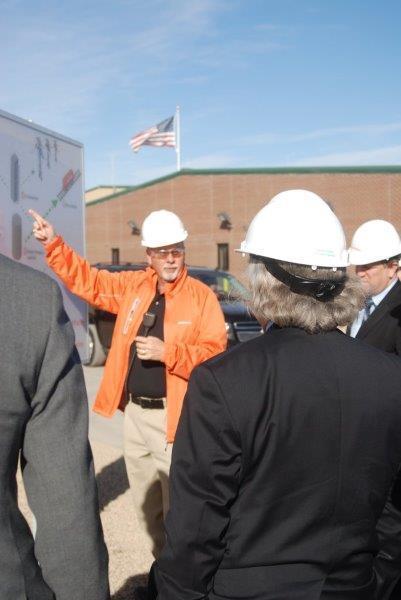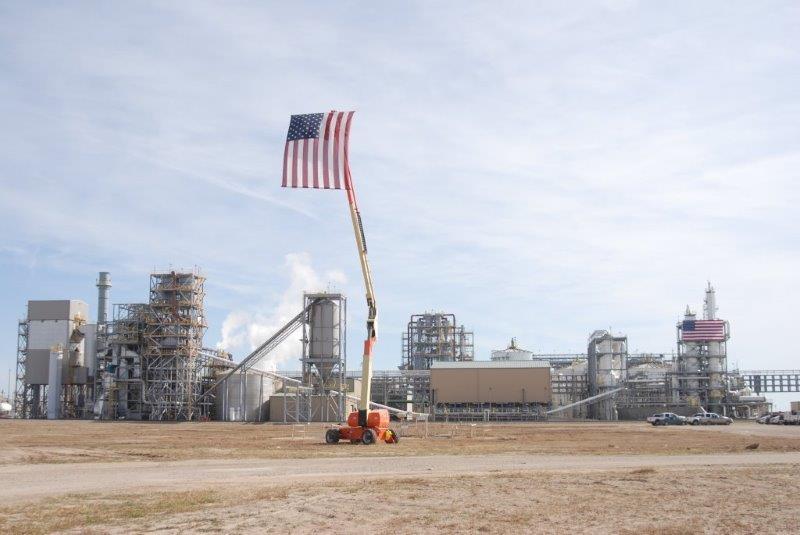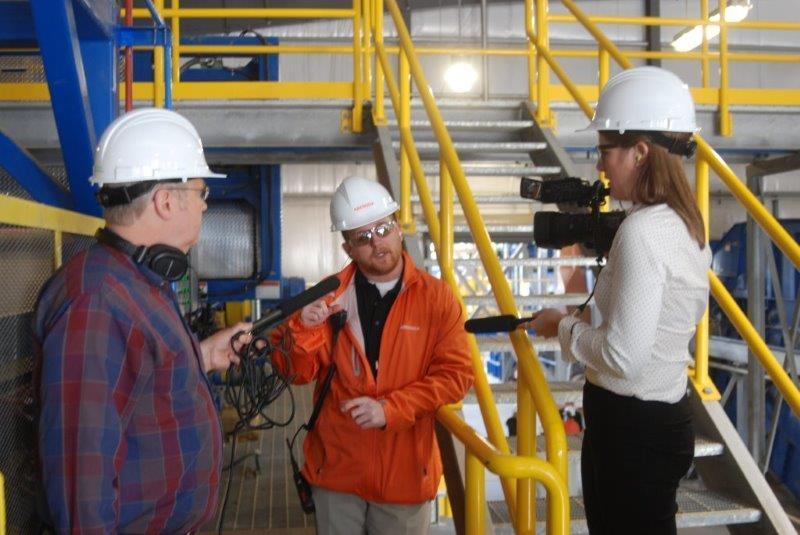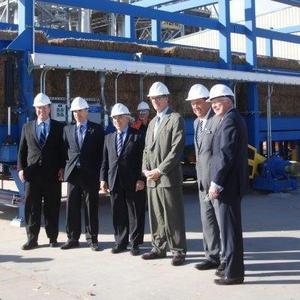Abengoa plant has multiple feedstock capabilities













Holly Jessen
October 20, 2014
BY Holly Jessen
Hugoton, Kanas--One of the best features of the Abengoa Bioenergy plant is the ability to convert a wide variety of feedstocks into cellulosic ethanol, Chris Standlee, executive vice president of Abengoa, told Ethanol Producer Magazine in an exclusive interview prior to the facility’s grand opening ceremony. That includes agriculture waste leftover after corn, grain sorghum and wheat are harvested as well as prairie grasses. “It’s a great area to be able to pull from multiple feedstocks,” he said.
Abengoa marked the completion of its cellulosic ethanol plant Oct. 17, just a few weeks after Poet-DSM held its grand opening ceremony Sept. 3. The events were eagerly anticipated and represent many years of hard work.
Not having enough biomass to keep the plant producing is not a concern, Standlee told EPM. In fact, an analysis showed that all ag residue and grasses in a 50-mile radius of the plant could provide 5.3 million tons of feedstock in a year. At full capacity, the facility, which will also use biomass to produce steam and electricity to power the plant, will require 320,000 to 350,000 tons of biomass yearly. “We use a lot but there is a lot,” he said.
Advertisement
Advertisement
Abengoa has also done testing with wood from shredded pallets produced by a local manufacturer. Wood is a little tougher feedstock to convert, Standlee said, adding that it needed additional pretreatment. Javier Garoz Neira, CEO of Abengoa Bioenergy, said during the grand opening ceremony in Hugoton that the company is operating its Spain demonstration plant on municipal solid waste, pointing to additional future feedstock options in Hugoton.
The event was attended by people from many different walks of life, from local farmers and community members and their children to members of government such as Kansas Gov. Sam Brownback, and U.S. Secretary of Energy Ernest Moniz. Sen. Pat Roberts, R-Kansas, told the crowd that it was appropriate that the first state to do hydraulic fracturing is now home to one of the first cellulosic ethanol plants. Kansas grows crops to feed the world and now it will produce a product that will help the U.S. increase its energy security and weaken the grip of OPEC, he added.
Moniz, who gave a keynote address, said that every gallon of cellulosic ethanol produced reduces the impact of harmful greenhouse gases, when used to fuel the nation’s vehicles. “The Department is committed to supporting innovative technologies, from an early idea in the lab to a full, commercial-scale source of clean energy,” he said. “As part of the Administration’s all-of-the-above approach to homegrown American energy, the production of cellulosic ethanol creates economic opportunities for rural communities, helps diversify our energy portfolio, and moves us closer to a low-carbon energy future.” Abengoa received a $132.4 million loan guarantee from the U.S. DOE in 2011, and, previously, a $97 million cost-shared grant from the DOE’s office of Energy Efficiency and Renewable Energy.
Advertisement
Advertisement
Although construction is complete and some ethanol has been produced as different parts of the facility were tested, full startup is yet to come, Standlee told EPM. He expects that to happen in a relatively short time with full capacity production of 25 MMgy hoped for by the second quarter of next year.
During a pre-ceremony plant tour for media and visiting dignitaries, Kevin Gross, an Abengoa process engineer who has worked exclusively on the plant’s pretreatment technology for four years, said the company would initially use some natural gas and dry biomass to power up the plant. Once it is operational, however, it will produce process steam and electricity on-site, with about 5 to 10 MW electricity available to sell to the grid.
Upcoming Events





